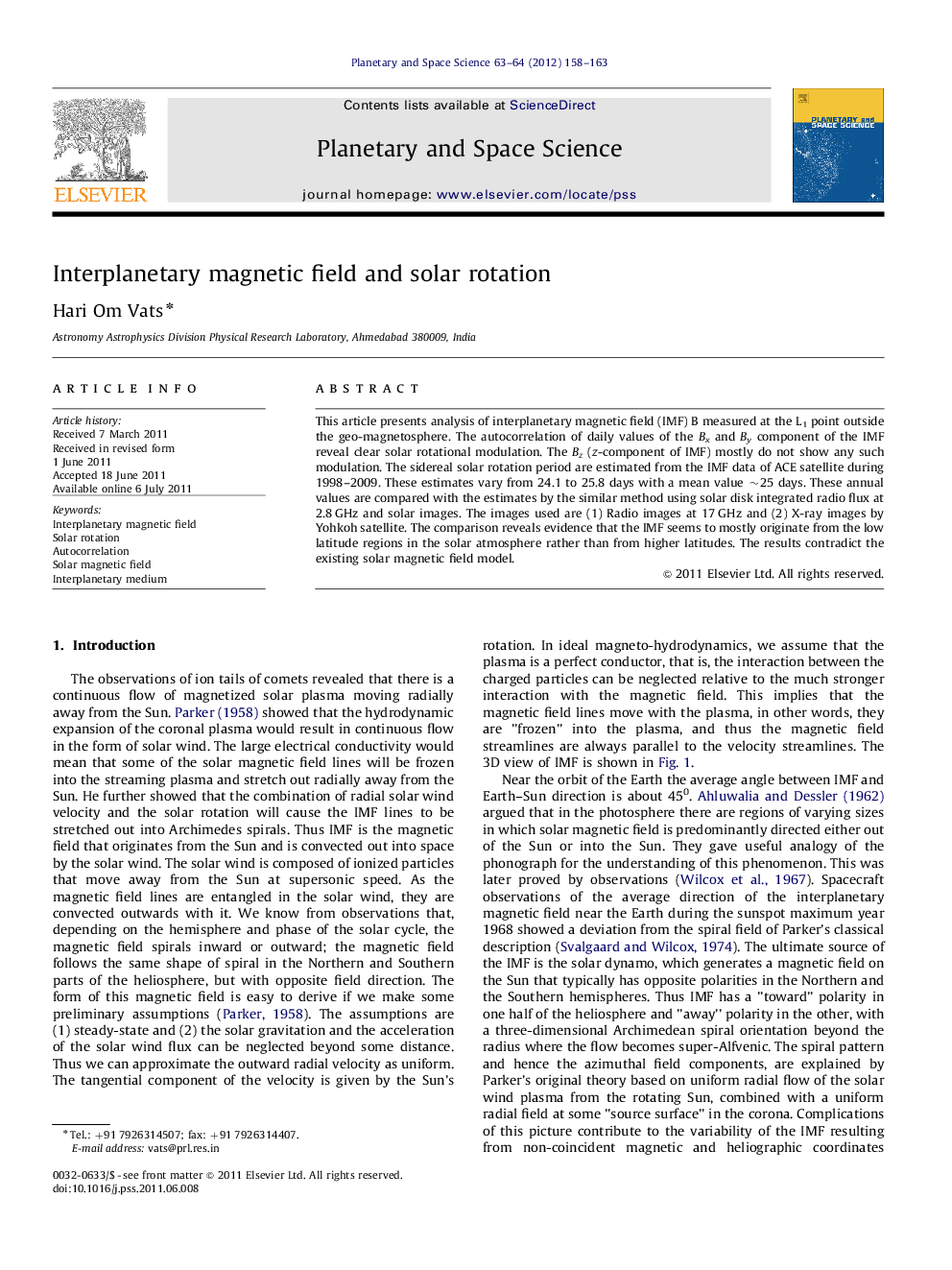| Article ID | Journal | Published Year | Pages | File Type |
|---|---|---|---|---|
| 1781446 | Planetary and Space Science | 2012 | 6 Pages |
This article presents analysis of interplanetary magnetic field (IMF) B measured at the L1 point outside the geo-magnetosphere. The autocorrelation of daily values of the Bx and By component of the IMF reveal clear solar rotational modulation. The Bz (z-component of IMF) mostly do not show any such modulation. The sidereal solar rotation period are estimated from the IMF data of ACE satellite during 1998–2009. These estimates vary from 24.1 to 25.8 days with a mean value ∼25 days. These annual values are compared with the estimates by the similar method using solar disk integrated radio flux at 2.8 GHz and solar images. The images used are (1) Radio images at 17 GHz and (2) X-ray images by Yohkoh satellite. The comparison reveals evidence that the IMF seems to mostly originate from the low latitude regions in the solar atmosphere rather than from higher latitudes. The results contradict the existing solar magnetic field model.
► Interplanetary magnetic field measured at the L1 point has been analyzed to reveal solar rotation. ► Estimated sidereal solar rotation period during 1998–2009 vary from 24.1 to 25.8 days with a mean value ∼25 days. ► Comparison with similar analysis of solar images reveals evidence that the IMF seems to mostly originate from the low latitude regions in the solar atmosphere rather than from higher latitudes. ► Results contradict the existing solar magnetic field model.
